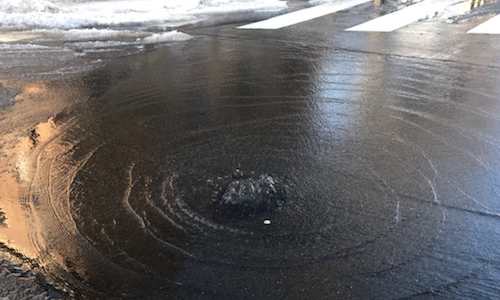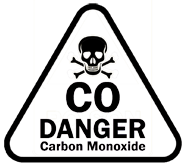When the water is restored after a water main is fixed, that’s when plumbing problems tend to happen. Individual plumbing fixture water supplies can clog up and create a low flow situation. Here’s some preventative advice for you to follow so you don’t end up with unnecessary plumbing repairs and services.
What is a water main?
The water supply pipe that’s buried in your street and brings water to your home is called a water main. It supplies everyone in your neighborhood with potable drinking water. Eventually from old age, the water main ends up breaking and leaking water on the road. Usually, breaks will occur when it’s freezing outside during the winter, but can start gushing at any time of the year without notice!
Here is a video I was able to capture this year of a main water break in the middle of North Neville Street and Bayard Street in Pittsburgh.
The problems!
After a water main is fixed and the water is restored back into the existing service pipes, all of the sediment and dirt that accumulated throughout the years is disrupted and circulates in the water. Most of the time soil and foreign objects associated with the excavation and repair of the pipe get inside it and contaminate the water for a short period.
Somehting that is less common (but I’ve actually seen), is splinters from wood water mains in a customer’s faucet. These wood water mains are extremely rare, but there are still some active in Pennsylvania as noted in this NY Times article on wood water mains.
Depending on how severe a water main break is, the water authority typically will have a boiling advisory broadcasted on local news and radio stations if necessary.
When a water main breaks it creates the following problems:
- dirty water
- sediment build up
- low flowing fixtures
The dirty water will clog up faucets, fill valves in toilets, shower heads and even contaminate hot water heaters. Anything that has water flowing through it and uses some kind of screen or regulating mechanism will be affected and can malfunction from the dirty water. Below are pictures of some plumbing parts that typically clog up:
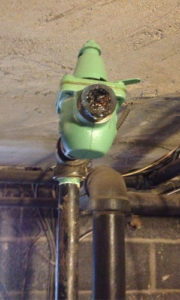
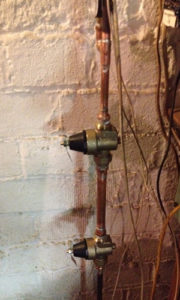
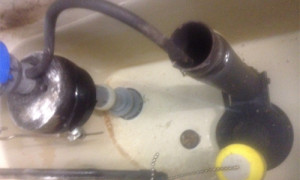
Fill Valve
How do I avoid the problems?
After water is restored from the main water pipe to your home, you want to first start by running water through your laundry tub faucet. This is where you can remove all of the sediment and dirt from the main water line before it circulates through your water pipes. When you are performing this process make sure you only run the cold water first for at least 5 minutes. If you run the hot water you be running dirt and sediment into your water heater. There are some laundry tub faucets that have an aerator/screen if you have one you will have to remove it first before flushing the cold water.
To eliminate the problems listed above you can follow these simple steps:
- flush cold water through the laundry tub faucet or outside hose bibb
- flush water heater out
- remove areators from all faucets flush out
- open bathtub faucet and flush out
- remove shower heads flush pipe out
Repeat the steps if the water doesn’t flow cleanly and if the water still remains dirty notify the water authority immediately (click here to report water main problems in the City of Pittsburgh). If you don’t flush out your pipes after a main water repair you could create significant headaches for yourself.
Do you need help?
Have you flushed out the lines and still have low water flow? That may be an indication that a regulator, backflow preventer, a valve, or supply line is clogged. At that point it’s a good time to call in a plumber to find the exact root of the problem. Schedule a call with Vince to check your low water flow problems.

